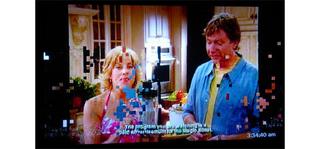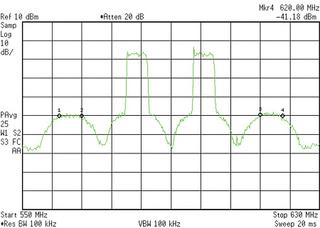Charles W. Rhodes
Latest articles by Charles W. Rhodes

The Challenge of Channel Election
By Charles W. Rhodes published
My research into DTV-DTV interference resulted in some interesting spectrum plots concerning third-order intermodulation (IM3) products as a source of such interference.

White Spaces Are There For a Reason
By Charles W. Rhodes published
I have recently written about the hot topic of sharing broadcast spectrum with unlicensed devices.

IEEE Symposium Highlights
By Charles W. Rhodes published
By all accounts, the IEEE Fall Broadcast Technology Symposium was a success.

Does DTV Interference From Taboo Channels Exist?
By Charles W. Rhodes published
With repacking now in the future for many UHF broadcasters, the problems of interference between DTV signals crammed into Channels 14–29 for example, need to be reconsidered.

The Perils of Putting TV Stations in the Duplex Gap
By Charles W. Rhodes published
In 2014 the FCC published details on how it will configure the 600 MHz Band.

DTV Interference and Its Mitigation After Repacking
By Charles W. Rhodes published
Our tests showed that the double-conversion tuners tested were more vulnerable to interference than the converter boxes with a single-conversion tuner.

Interference Between 700 MHz Cellphone Signals and DTV Signals
By Charles W. Rhodes published
If my antenna is on my rooftop, everything is probably OK, but if my antenna is indoors, it may pick up enough signal power from a nearby cellphone to block DTV reception.

Inter-Band RFI: Should Stations Worry?
By Charles W. Rhodes published
All third-order intermodulation products, (IM3 and Triple Beats), occupy three contiguous channels, so there can be interference to reception on Chs. 30, 31, 32, 33, 34, and 35.

Assessing Post-Repack Channel Options
By Charles W. Rhodes published
It’s a given that there is going to be considerable “channel shuffling” after the upcoming television broadcast spectrum auctions.

Moving Into an Interference-Limited Environment in 2015
By Charles W. Rhodes published
This column has used the term “D/U ratio” (desired/ undesired) in describing how the FCC might repack the UHF TV spectrum.

Why LightSquared’s Proposal to Operate at Reduced Power Won’t Work
By Charles W. Rhodes published
I expect the FCC to soon grant permission for LightSquared to proceed with its build-out.

Solving DTV-Wireless Broadband Interference Problems
By Charles W. Rhodes published
In addition to DTV sideband splatter into adjacent spectrum, there is another source of noise jamming built into receiving devices that have poor RF selectivity.

Cellphone, DTV Interference Issues Examined
By Charles W. Rhodes published
So what should the FCC do about Channel 30?

Can Terrestrial Broadcasting and GPS Co-exist in Adjoining Spectrum?
By Charles W. Rhodes published
My simulations indicate the spectrum which may be generated in GPS receivers by LightSquared signals.

Updating the Future of GPS
By Charles W. Rhodes published
Additional testing set for January was to involve prototypes of GPS receivers and active GPA antennas for commercial aircraft

FMI: More than Just a Problem on the Fringe
By Charles W. Rhodes published
FM traps help, but won't solve every problem.

SFN in an FMI Environment
By Charles W. Rhodes published
The average field strength of a SFN would have to decrease to permit all incumbent broadcasters to continue to with their very own channel.

Analog or Digital: Ghosts Plague Reception
By Charles W. Rhodes published
It is a little early for ghost stories, but let’s hope single frequency networks don’t come to haunt broadcasters.

Signal Distortion And Interference
By Charles W. Rhodes published
Distortion comes in two basic classes: Linear distortion, which is not an oxymoron; and nonlinear distortion, which includes all other distortions except noise.
Get the TV Tech Newsletter
The professional video industry's #1 source for news, trends and product and tech information. Sign up below.




